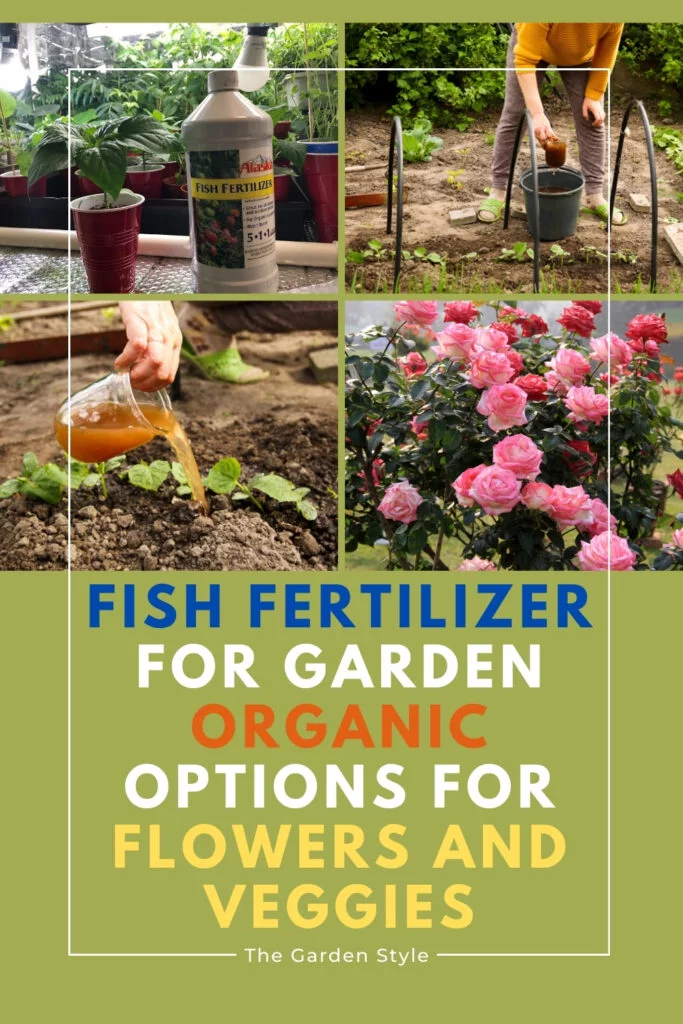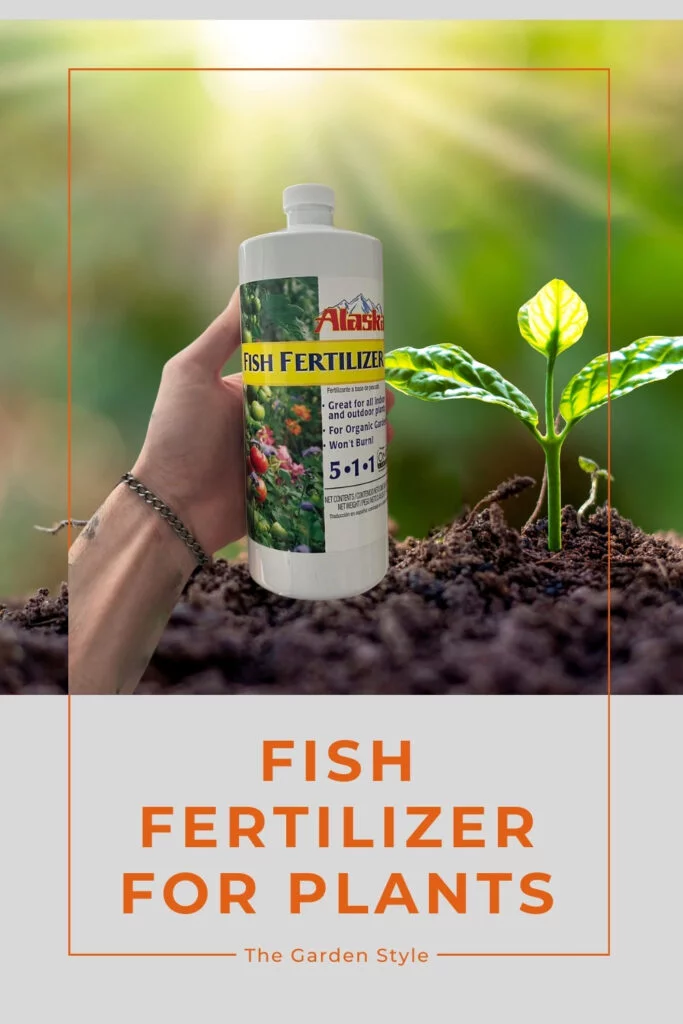Are you looking to take your garden to new heights this season? Consider adding fish fertilizer for plants to your plant care routine. This potent, eco-friendly soil amendment harnesses the power of the ocean to provide your plants with an array of essential nutrients. From vegetables to flowers, fish fertilizer for plants can work wonders in promoting lush, productive growth in a wide variety of plant species. Let’s dive into the world of this phenomenal type of organic fertilizer!
Table of Contents
What Is Fish Fertilizer?
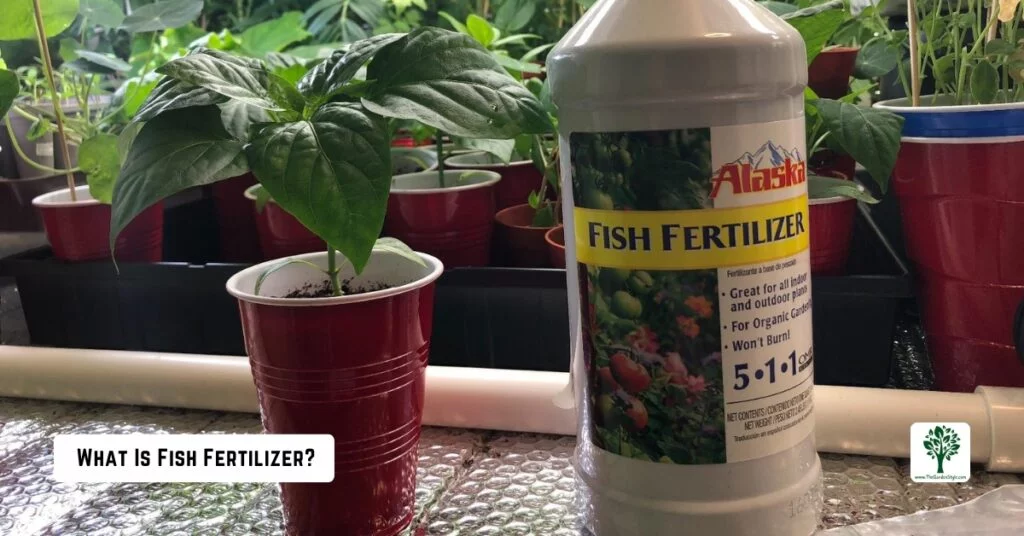
Fish fertilizer is made by breaking down the proteins and fats from fish waste into a concentrated liquid formula. The end product is a nutrient-dense emulsion or hydrolysate teeming with nitrogen, phosphorus, potassium, and other vital minerals. Not only is it packed with plant-boosting power, but fish fertilizer is also an excellent way to recycle and repurpose the by-products of the fishing industry in an environmentally sustainable manner.
Fish fertilizers come in various formulations with different nutrient ratios to meet the needs of different plant types. Some standard blends include:
- 5-1-1 (5% nitrogen, 1% phosphorus, 1% potassium) – This balanced mix is ideal for leafy green vegetables and other plants requiring high nitrogen levels.
- 2-3-1 (2% nitrogen, 3% phosphorus, 1% potassium) – With a higher phosphorus content, this formula encourages prolific flowering and fruiting for tomatoes, peppers, and flowering annuals.
- 0-10-10 (0% nitrogen, 10% phosphorus, 10% potassium) – Zero nitrogen makes this blend perfect for root development in seedlings and transplants before transitioning to a more nitrogen-rich fertilizer.
If you are a beginner trying to understand what the sequence of numbers in fertilizers means, it is always the same: N-P-K. This means Nitrogen (N), Phosphorus (P), and Potassium (K). Regardless of the type of fertilizer you are looking for, the sequences are exactly the same: nitrogen, phosphorus, and potassium.
Recommended reading: Different Types of Fertilizers
What Plants Like Fish Fertilizer?
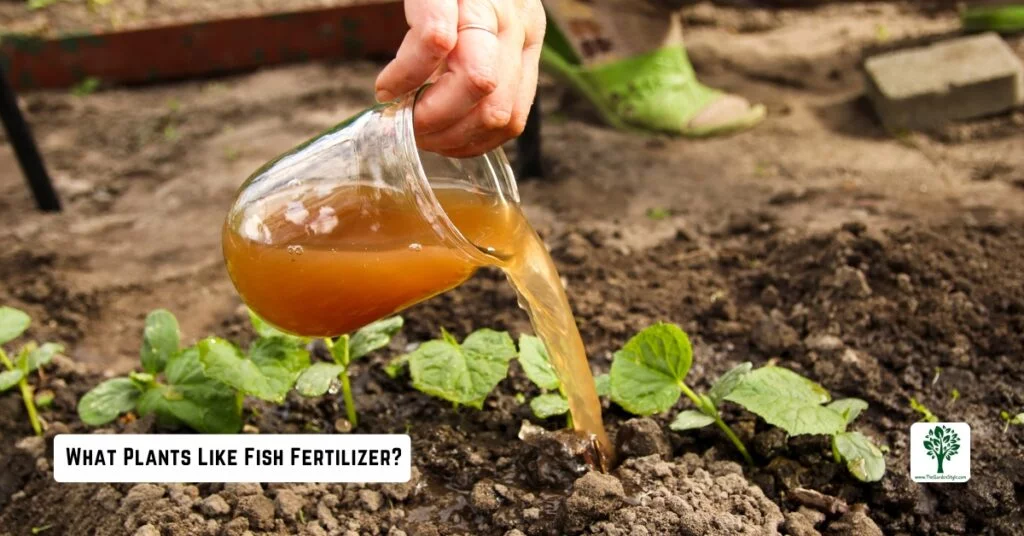
The real question is, what plants don’t benefit from fish fertilizer? This versatile organic amendment can nourish virtually any species in your landscape, making it an excellent all-purpose option for the mixed garden. That said, certain plant varieties tend to be particularly responsive:
Vegetables: Heavy feeders like leafy greens, cole crops, corn, and tomatoes eagerly soak up the nitrogen in fish fertilizer to support lush foliar growth. The phosphorus also contributes to robust root systems and plentiful fruiting.
Flowers: For a dazzling display of colorful blooms and vibrant flower beds, fish fertilizer gives annual and perennial flowers, roses, and bulbs the nutrient boost they crave. Many flowering plants respond exceptionally well to formulas higher in phosphorus, like 2-3-1.
Fruits: Fruit trees, cane fruits, and berry bushes can genuinely shine when fed fish fertilizer, as the balanced nutrient profile sustains healthy woody growth and abundant crop production season after season.
Lawns and Turf: Applying fish fertilizers as part of your lawn care regimen can reinvigorate tired, patchy grass by stimulating new growth and thickening up your turf.
The bottom line? From the vegetable patch to the flower garden, fish fertilizers provide stronger and healthier plants across the board.
Differences Between Fish Fertilizers Chart
Here is a table summarizing the key differences between common fish fertilizer formulations:
| Nutrient Ratio | Best For | Benefits |
|---|---|---|
| 5-1-1 | Leafy greens, cole crops, heavy nitrogen feeders | Promotes vigorous foliar growth, dark green color |
| 2-3-1 | Tomatoes, peppers, flowering annuals/perennials | Boosts blooming, flower production, and fruiting |
| 0-10-10 | Seedlings, transplants, root development | Strengthens new root systems without excess N |
| 3-5-3 | Flowering plants, roses | High phosphorus for abundant blossoms |
| 10-10-10 | Bulbs like tulips when first sprouting | Balanced nutrients for emerging bulb shoots |
The primary difference is the ratio of nitrogen (N), phosphorus (P), and potassium (K) which should be matched to the specific plant’s nutrient needs. Higher N promotes leafy growth, higher P supports flowering/fruiting, and K contributes to overall plant health. Some fish fertilizers for plants are organic, while others are not. Be sure to read the manufacturer’s label to confirm.






Fish Fertilizer for Vegetables
Vegetable gardens can truly thrive when fed a high-quality fish fertilizer. The nitrogen-rich 5-1-1 ratio is an ideal choice for leafy greens, cabbage, broccoli, and other veggie crops that require abundant nitrogen to fuel vigorous foliar growth.
For heavy feeders like corn, tomatoes, and cucumbers, consider using a more balanced 2-3-1 fish fertilizer to provide ample nitrogen for lush vines and foliage, along with an extra phosphorus boost to support flowering, fruiting, and robust root systems.
When starting seeds or transplanting seedlings, give them a gentle nudge with a low-nitrogen 0-10-10 fish fertilizer. This phosphorus and potassium-rich formula encourages strong root development to help young plants get established while avoiding an excess of nitrogen.
Fish Fertilizer for Flowers
Flowers put on their biggest, brightest show when fed a fertile diet – and fish fertilizers make an outstanding bloom-boosting meal. Most flowering annuals and perennials respond incredibly well to fertilizers higher in phosphorus, like a 2-3-1 or 3-5-3 fish fertilizer.
Elevated phosphorus levels promote abundant flowering and healthy root growth. At the same time, the nitrogen component sustains vigorous foliar development for lush greenery to nicely complement those beautiful blooms.
For outstanding rose bushes, apply a 2-3-1 fish fertilizer every 4-6 weeks during the blooming season. You’ll be rewarded with an impressive flush of big, colorful rose blossoms set against a backdrop of robust foliage.
Bulbs like tulips and daffodils also appreciate a nutrient kick from fish fertilizer when first sprouting in spring. A 0-10-10 formula provides phosphorus and potassium to strengthen emerging bulb shoots and roots without overloading on nitrogen.
With all the bountiful blooms, fish fertilizer makes an excellent choice for keeping your flowerbeds and gardens looking their vibrant best throughout the growing season.
How To Use Fish Fertilizer
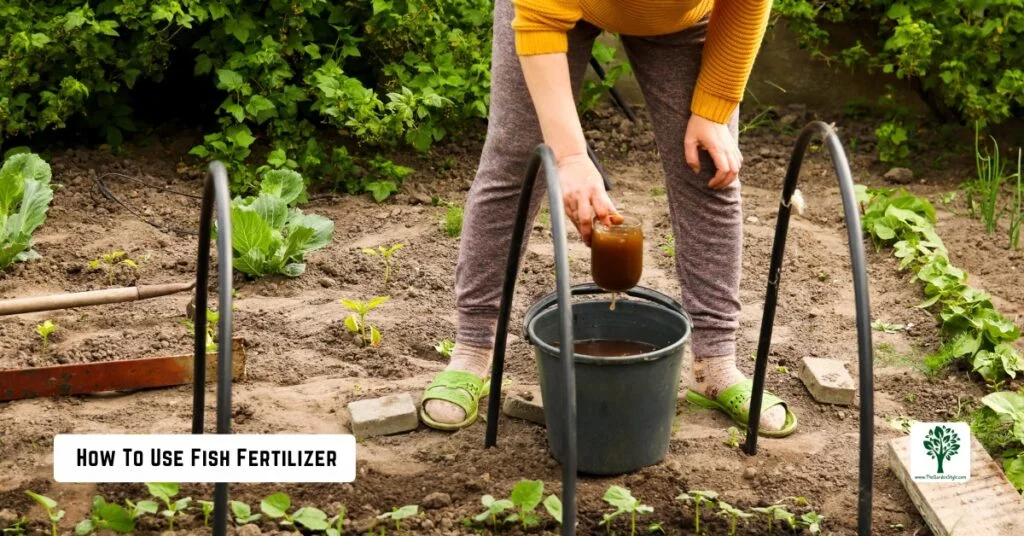
Fish fertilizer makes for an easy, low-maintenance way to give your plants a nutrient boost. However, it’s worth noting that undiluted fish fertilizer concentrate can have a pungent odor that some gardeners find unpleasant. Fortunately, this fishy smell dissipates once the concentrate is diluted adequately with water. Taking this potential downside into account, the most common application methods include:
Soil Drench
- Dilute the fish fertilizer concentrate with water according to package instructions, typically 1-2 oz per gallon.
- For in-ground plants, slowly pour the diluted solution around the base out to the drip line, allowing it to soak into the soil.
- For containers, water thoroughly with the fish fertilizer solution until it starts to drain from the bottom.
Foliar Spray
- Mix the fish fertilizer concentrate with water according to the recommended ratios.
- On a cool, cloudy day, thoroughly mist all plant surfaces until the leaves are lightly coated but not dripping.
- Allow 4-6 hours for the spray to dry before exposing plants to direct sunlight.
Soil Amendment
For new plantings, you can work fish fertilizer directly into the top 6-8 inches of garden soil or potting mix at a rate of 1-2 cups per 10 sq ft of planting area.
How Often to Use Fish Fertilizer
As with any fertilizer, moderation is key when it comes to fish fertilizer applications. Too much of a good thing can potentially burn plants and disrupt soil chemistry.
A general guideline is to feed plants every 3-4 weeks during the active growing season with either a soil drench or foliar spray. If fish fertilizer is used as a soil amendment, it should be done only once at the start of the planting season.
Pay close attention to the specific formula you’re using, as nitrogen-heavy blends like 5-1-1 may require more frequent applications compared to those lower in nitrogen. Always follow product label instructions. When in doubt, err on the side of too little rather than too much.
With the right fish fertilizer incorporated into your plant care routine, your garden is primed to produce a flourishing, bountiful harvest year after year!
Final Conclusions
From the veggie patch to the flower bed, fish fertilizer is a phenomenal organic option for giving your plants the nutritional boost they crave. This all-natural, multipurpose fertilizer provides a smorgasbord of essential nutrients like nitrogen, phosphorus, and potassium to fuel vibrant growth and bountiful harvests.
Whether you go with a balanced 5-1-1 blend for leafy greens, a bloom-promoting 2-3-1 formula for flowers, or alternate ratios for other needs, fish fertilizer makes plant feedings easy. Just mix it with water and drench, spray, or amend your soil – the pungent scent quickly fades once diluted.
With its rapid nutrient release and eco-friendly origins, fish fertilizer checks all the boxes. Do your plants, yourself, and the planet a favor by harnessing the power of the sea this growing season! Your lush, productive garden will thank you.
Frequently Asked Questions
Fish fertilizer is beneficial for a wide range of plants, including vegetables, flowers, and fruits. Its nutrient-rich formula promotes healthy growth and enhances overall plant vitality.
When used correctly according to instructions, fish fertilizer is unlikely to burn plants. However, as with any fertilizer, overapplication can potentially cause nutrient imbalances or stress to plants. Diluting properly and following recommended usage guidelines minimizes this risk.
Fish fertilizer is typically made through enzymatic hydrolysis, a process that breaks down fish byproducts into a nutrient-rich liquid. This liquid is then concentrated to form the final product, which contains essential nutrients like nitrogen, phosphorus, and potassium, along with trace elements.
If this post about fish fertilizer for plants was helpful, please share it:
